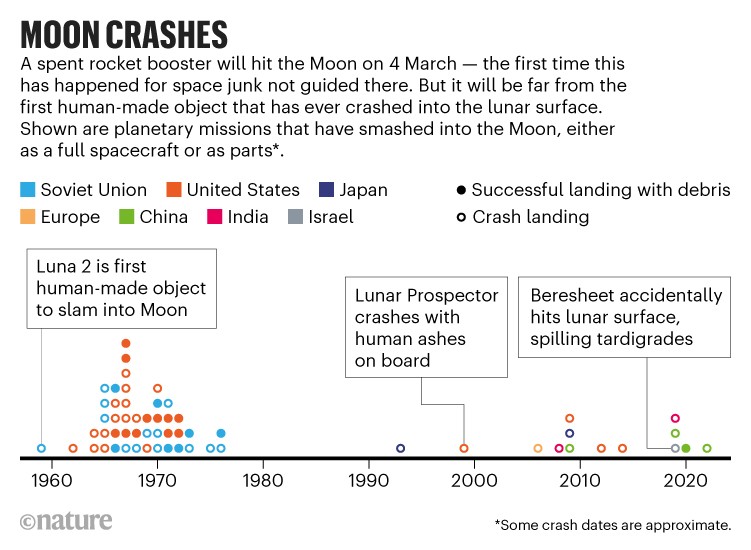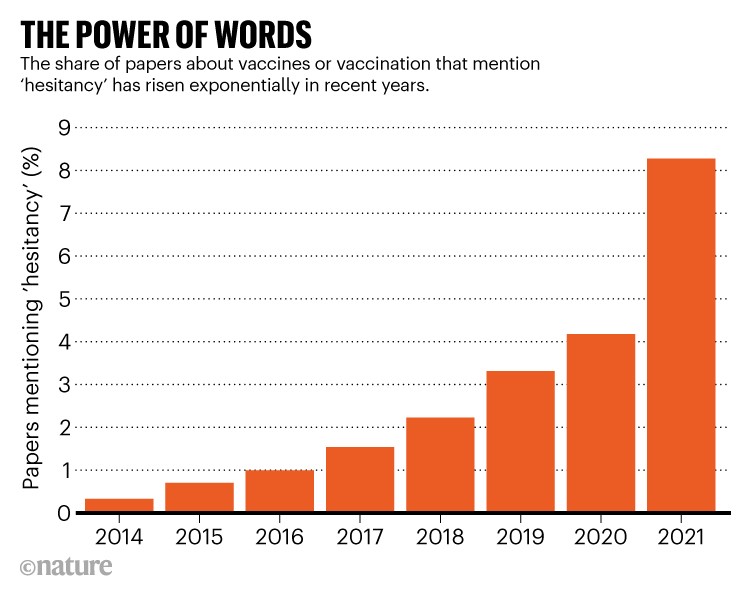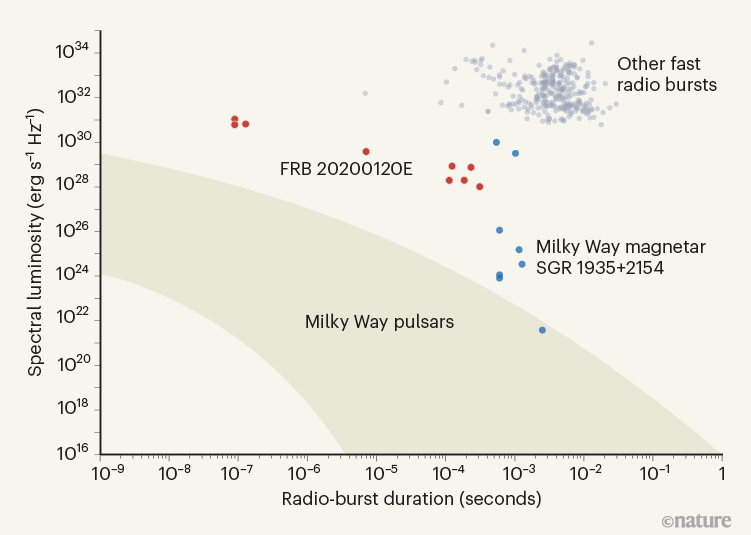Decades of moon litter
Table of Contents
When a spent rocket booster smashes into the Moon on 4 March, it will add to a collection of spacecraft that previously crashed there — as this graphic shows. The first was the Soviet Union’s Luna 2 in 1959, which became the first human-made object to make contact with another celestial body when it crashed a little north of the lunar equator. The most recent was China’s Chang’e 5 lander, which dropped an ascent vehicle onto the Moon in 2020 as it flew lunar samples back to Earth.
Talk of vaccine hesitancy on the rise
The term ‘vaccine hesitancy’ is increasingly used to explain why so many people remain unvaccinated against SARS-CoV-2, even when vaccines are plentiful. The share of papers with ‘vaccine’ or ‘vaccination’ in the title that also mention ‘hesitancy’ rose from 3.3% in 2019 to 8.3% in 2021, according to a Web of Science search.
A Comment this week argues that the preoccupation with vaccine hesitancy centres too much of the responsibility for the outcome of a vaccination programme on individuals, and that it is mainly governments that have the power to make vaccines both accessible and acceptable.
A surprising source of radio bursts
If you were to look up at the sky with radio goggles, you would notice bright flashes at random locations roughly once every minute. Over the past 15 years, astronomers have detected more than 600 sources of such radio bursts — as this graphic explains.
Fast radio bursts are luminous radio emissions typically emanating from distant galaxies, and can be emitted by highly magnetized neutron stars called magnetars. The bursts are also commonly observed from less-magnetized neutron stars, known as pulsars, in and around the Milky Way. The shaded region defines the range of luminosities and durations of radio bursts from these pulsars. Only one Milky Way magnetar, called SGR 1935+2154, has been seen to emit fast radio bursts (blue dots) similar to those from other galaxies.
A paper in Nature reports the unusual location of a relatively nearby source of fast radio bursts, known as FRB 20200120E, and a paper in Nature Astronomy shows that some of its emissions were just tens of nanoseconds long (red dots). Although the spectral luminosities of the FRB 20200120E emissions are similar to those of fast radio bursts, the durations are more like those of some pulsars. A News & Views article explains more about these discoveries.



